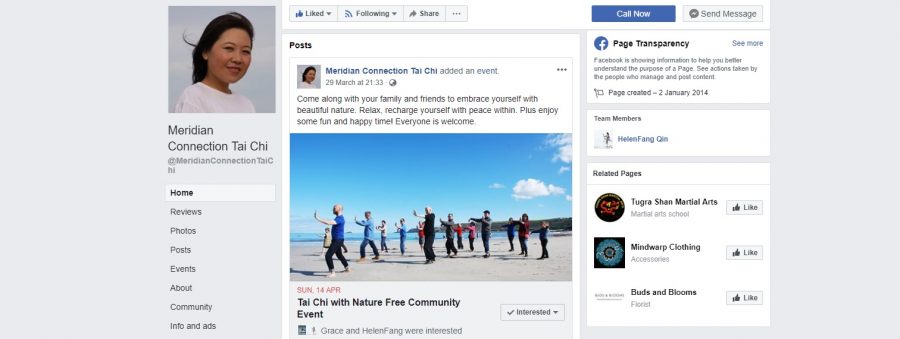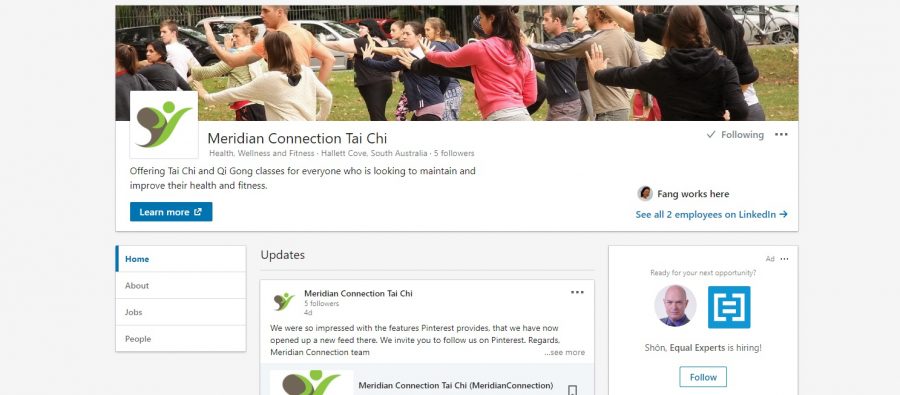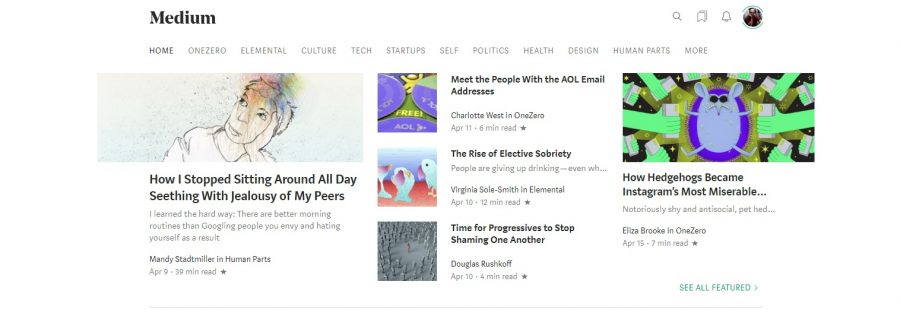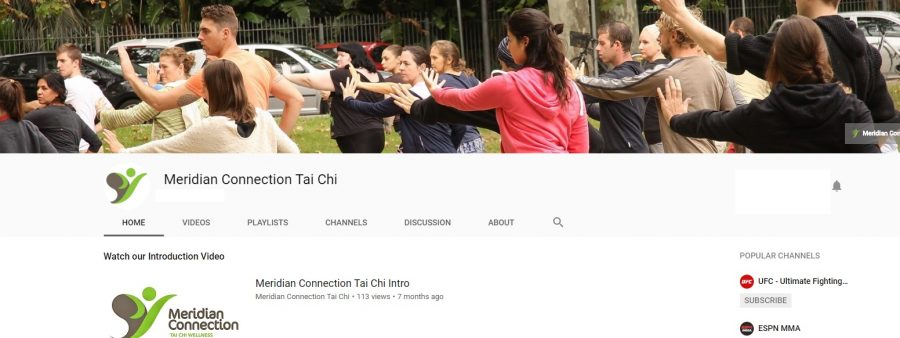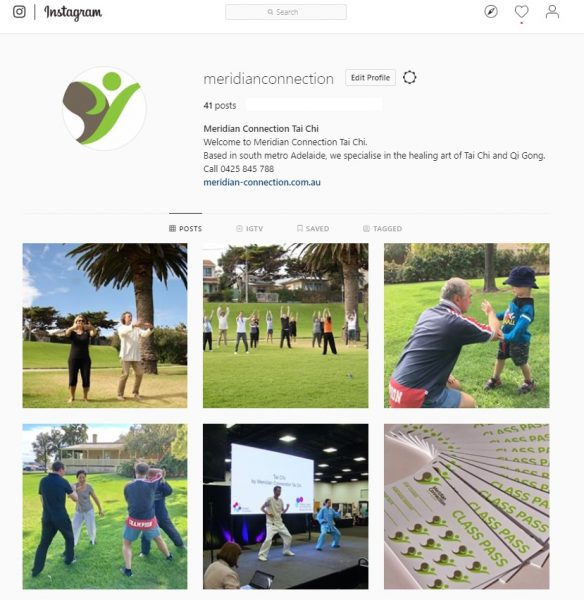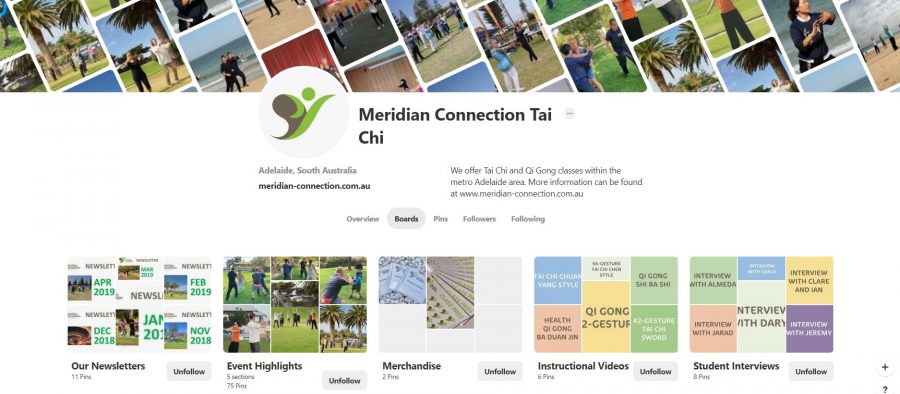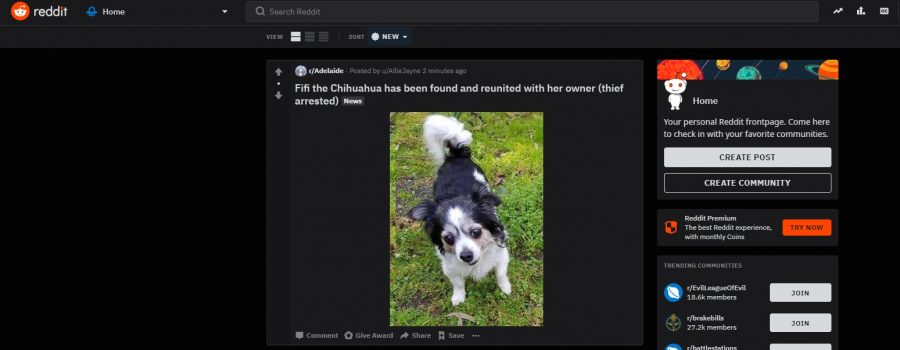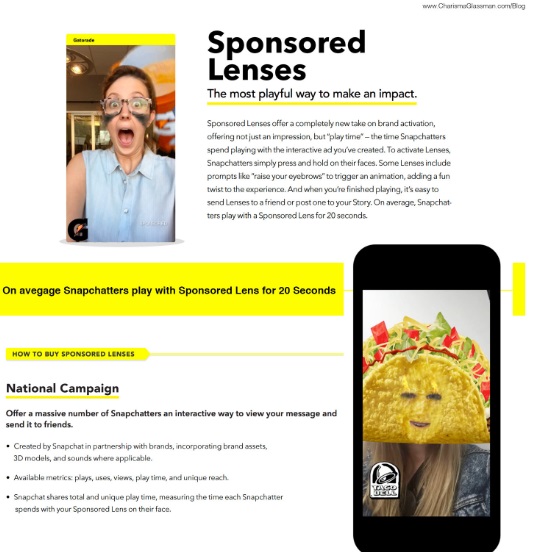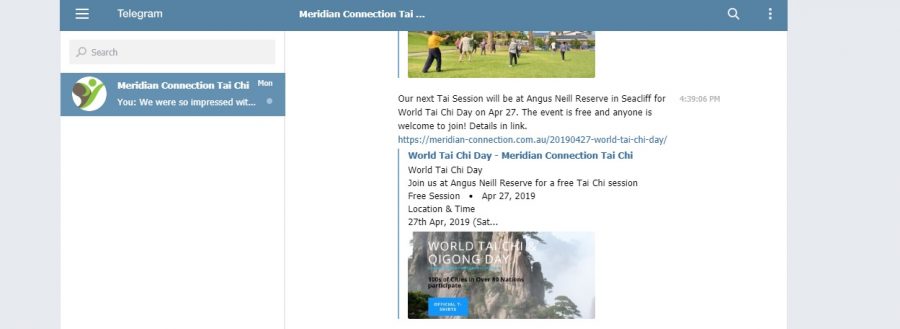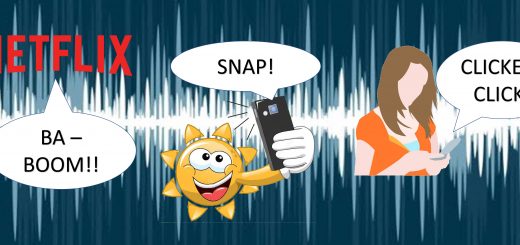Using Social Media to Promote Your Local Business
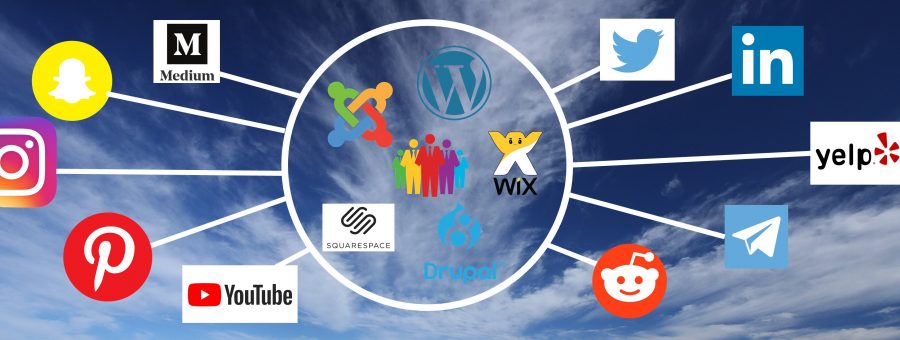
Shôn Ellerton, April 20, 2019
Love it or loath it, social media is here to stay but with the ever-increasing number of platforms being introduced, which ones to use?
Let me start in saying that I have no formal qualifications in marketing or advertising; nor have I worked in marketing or advertising professionally during my career. However, during the last couple of years, I have built experience in these areas by marketing our small family business, a Tai Chi academy called Meridian Connection Tai Chi, run by my wife. I will use this as an example throughout the article.
I can tell you. It has not been an easy ride and furthermore, it takes a lot of commitment and time to be successful at marketing a small business. There’s leaflet design, printing and distribution. There’s email newsletter drops. Networking through likeminded or related groups. Attendance at expos and demonstrations. And of course, the challenge of creating and hosting a successful website.
However, we cannot forget about social media, whether one takes an interest in it or not. Moreover, the spectrum of social media platforms available for us to use is widening leaving many of us confused as to which platforms to use and how many of them to keep maintaining your material on.
Having Your Own Website is Essential
Before we continue with social media platforms, I cannot stress how important it is to have your own website. Essentially, this acts as a hub for your content in the ‘cloud’. You own the content and can control the layout of your website in any way you please. Compared to building websites a decade ago or more, today’s basic websites can be put together with the greatest of ease. Building a basic website using WordPress is fairly easy compared to what was available ten or twenty years ago; however, there have been several new platforms that have recently emerged which offer an extremely easy way to put a website together. Just be aware that there are limitations with some of these in terms of what you can or cannot do.
With respect to promoting your business in the ‘cloud’, you can get by without a website and rely purely on social media; however, the problem is that there is no ‘hub’ or central point to host your material. Having your own website will provide links to your social media platforms, and likewise, your social media platforms will refer back to your website.
Selecting the Most Suitable Social Media Platforms
Choosing the right social media platforms and how many you wish to keep up-to-date is important. The more social media platforms you use to promote your business, the more work is required to keep them updated. What one does not want is for one of the platforms to be ‘forgotten’ looking like it has never been updated. It never instils confidence in the consumer when material is never updated on a social media platform especially when the content differs enormously from what is hosted on your website or another of your social media platforms which you do keep updated. There are a number of clever third-party tools which make updating on multiple social media sites easier; however, I have not personally used them. At least, not yet. Therefore, don’t commit yourself to too many platforms unless you’ve got time for them all.
What kind of material do you want to promote? Do you need to promote video for example? If you’re a small food takeaway establishment serving your local neighbourhood, it’s probably unlikely that you will need video. However, you will most certainly want to be in a geographical ‘where’s my nearest’ review platform like Yelp. If your business provides online training as well as on-site training, then you probably will need video. Does your business rely on gathering opinions or reviews by others? One may need online chatrooms to pass around ideas and comments. Is your business constantly growing and you want to keep your clients and investors (if you have any) happy, then you will most certainly want an announcements feed like Twitter. Does your business rely on good photography or images, for example, food recipes or travel? Then you will most certainly want to use an image-based platform like Instagram or Pinterest.
In essence, you may need up to six or more platforms if your business requires all these different types of content: video, imagery, updates, chatrooms, blogging, and so on.
What are some Good Social Media Platforms to Use?
It so happens that my wife’s Tai Chi business needs a wide variety of social media platforms to be effective. There’s video, photos, business updates, regular classes, training workshops, merchandise and interesting Tai Chi-related articles to read. There are so many platforms one can use and, furthermore, one would never have time to explore them all. My knowledge is, thus, limited to only the most well-known of them all.
Many of the below social media platforms offer premium services which require a subscription of some sort. With the exception of a small annual subscription to Medium, I have not found it necessary to subscribe to a premium paid service. All the platforms below are free to use, so take advantage of them.
Most social media platforms are transient by nature meaning that older material is largely forgotten or seldom accessed. Unless otherwise stated, all the social media platforms I list below are transient in nature. Snapchat is one step further being ephemeral in nature meaning that messages are not permanent and ‘self-destruct’ after opening them. I’ll reinforce it again that having a website is vital due to the transient and ephemeral nature of social media platforms. Here are some of the social media platforms I use and why.
It goes without saying that Facebook is the number one platform for social media due to the sheer size of its audience. Practically anything can be posted here. Updates to the business, promotion of a new piece of merchandise, sound bites, brief stories, shares to interesting and related posts and so on. Facebook has had its ups and downs as featured in the press, particularly with personal privacy, and, partly because of this, many avoid Facebook altogether. However, not having a Facebook page could potentially be responsible for missing out on many opportunities simply due to the vast number of people using it.
What I like about Twitter is its very lightweight and bloat-free nature. Interestingly, many anti-Facebook people are perfectly fine with Twitter and are happy to receive a feed of updates on those individuals and businesses that they follow. Twitter is fast to load on both desktops and apps. It has a simple elegant format for your business homepage and posts (tweets) are generally direct and to the point. And this is one of the reasons why Twitter have set a maximum of 280 characters allowed per tweet. However, longer articles are easily referenced by linking them to another platform which supports longform writing, for example, LinkedIn or Medium. Twitter is particularly good at providing updates of the business in question.
LinkedIn is well-known for promoting one’s work experience and credentials in the form of a publicly-visible online CV. However, LinkedIn does much more. You can host company pages which you can format to your branding. You can create groups that bring likeminded people together. You can download basic information about your connections in the form of a spreadsheet which one can use to extract potentially valuable data for your business (or for yourself). What is particularly useful about LinkedIn is the ability to write nicely-formatted longform articles (much like Medium) which, when published, are freely available to anyone regardless if they are a LinkedIn member or not. There are many premium tiers of LinkedIn which offer more facilities all of which are quite expensive; however, the basic free account is usually more than sufficient for most. The article which you are reading here was published on LinkedIn, Medium and my own personal website.
Medium
Medium is a minimalistic-looking platform for publishing longform articles. These can include stories, detailed information about something happening in your business, newsletters and, well, just about anything. It does lack some basic features and, on top of that, one needs to pay a small annual fee if you want unfettered access to all the material and the ability to publish your material. The biggest quirks about Medium is the inability to search chronologically, determining how many times that you want to ‘clap your hands’ (max of 50) to a given post and the fact that your own comments against other material presents itself as a published story in your profile which is just downright strange. One cannot create an elegant-looking profile page, no collections are supported, and frankly, not much has been done to improve this platform for many years. Medium is often used in combination with Twitter to provide readers with newsletters and updates about their business, although, saying that, LinkedIn can do the same thing and, unlike Medium, it is not blocked in China at time of writing. I do publish material on Medium as well as LinkedIn; however, I am a little frustrated that Medium have not addressed some of these basic shortcomings. Still, Medium has its use and supports an uncluttered interface along with the ability to store your stories, articles and newsfeeds in a convenient place.
YouTube
If you need to host video, then YouTube is the obvious choice. I use YouTube extensively for my wife’s business. Hosting your own videos on your website is certainly possible; however, for most on basic web-hosting plans, your videos can chew up your available bandwidth and capacity very quickly. YouTube, and other video-hosting platforms, overcome this. You can create a reasonably well-presented homepage formatting what you wish the viewer to see there. You can organise your videos into playlists, you can stream live services, and so much more. Those subscribing to their favourite YouTuber or instructional channel will frequently visit that person’s YouTube homepage. In our case, users will generally not visit our YouTube homepage directly, but rather through links in our website and other social media. For those wanting an alternative to YouTube, there are plenty of platforms out there, out of which, another one I use, is Vimeo.
I’m quite new to Instagram and, frankly, not very keen on it from a user’s perspective. Photography being one of my hobbies, I quickly became disenfranchised by Flickr many years ago once Yahoo got hold of it and made it ‘bloaty’, slow and uneasy to use. I tried out Instagram instead as a platform for displaying my best photos. To my disappointment, this platform did me no justice. Not only does the format look poor, you can’t add groups and collections, and worst of all, your photos have to be cropped to be of square dimensions.
Instagram is odd in that adding photos using your desktop requires that you emulate your browser as a mobile phone. Not difficult to do, but it’s annoying that Instagram does not add that as a normal feature. There seems to be no way to creating collections or groupings of your material on a homepage. It’s almost as if Instagram is a one-dimensional timeline of images which you can caption. You can’t even link images to other sources either. Personally, I don’t see much in it except for the fact that a great number of people use it.
Being very popular indeed, it is worth spending some time and effort setting up an Instagram page. Despite my criticisms against it and the short time we’ve had it up and running, we get new followers each day. I once thought that Instagram was created as a great place for photography. If anything, it is far more well-suited to promoting a business that relies on images.
I’m brand new to Pinterest and have taken an instant delight with this social media platform. It does what Instagram does but far better. For example, it opens a new dimension by offering groupings (‘boards’) and subgroups (‘sections’). You can link photos to external websites. You can share other sources by ‘pinning’ them to your boards. It looks fantastic on desktops and apps. And most importantly, Internet search engines often come up with Pinterest links that you can link back to your business.
If anything, Pinterest would be my choice as a hub if I did not have a website. It is not restricted by a transient nature because your Pinterest homepage can be customised to display what you want without old material being replaced by newer material.
Pinterest does itself a disfavour by primarily promoting itself as a health and lifestyle platform for coming up with innovative ideas. It is no wonder that more than 70 percent of users are female and more than 70% comprises of DIY and hobbies. I think Pinterest is hugely underrated and has so much more to offer but it needs a wider audience. The number of Pinterest users represents a small fraction of Instagram’s; therefore, to increase the size of the audience, Pinterest could promote itself better to the wider business community.
Yelp
This very useful social media platform along with its slick interface is ideal for those who are looking for any business nearby where they are. Like Google Maps, it provides a visual representation where the business is by locating them on an online map. Yelp is subcategorised into most major types of businesses. If you’re for takeout near to you or looking for a handyman, this is a great platform. It is also good for placing reviews, so if you’re looking to gain more presence, try to adopt as many followers as you can and ask them to review your business. Another attractive feature is that you can create check-in offers to entice new customers. What’s unique about Yelp (and similar platforms) is that they can be almost self-sufficient without the need for a website. It provides the user with the ‘whats’ and the ‘wheres’.
One great example for using this type of platform is in the world of the traveller looking for a takeaway. I’ve often used these type of social media sites whilst on business interstate to guide me as to what’s available in the local area.
There’s probably more than meets to the eye with Reddit. At first glance, it just looks like an ordinary blog or another Twitter, but it does offer a richer interface with more control to moderate and customise the feed. The user interface is very easy to use and, after subscribing to Reddit feeds, they are easily navigated to via both the desktop and app. As far as it suits business, I have no personal experience of it as I have not used it for such. But it is definitely worth reading up on.
Snapchat
Yes. This is the one where messages ‘self-destruct’ after you open them. I don’t use Snapchat for my wife’s business, but it doesn’t mean you shouldn’t either. This social media platform sits firmly within the millennials and now has a very large following. It’s also rich in many other features of which, many of them, would seem alien at first. If there is any potential for your business to use, then I urge you to at least research this platform. Interestingly, Taco Bell have used this platform to great success.
Telegram
Telegram is a high-security messaging app that has raised a lot of controversy due to its alleged used in terrorist organisations. Don’t let that put you off though. Telegram is a very slick and very fast chatroom and messaging app. It works seamlessly between apps and desktop and is near-instantaneous in syncing with each other. You can chat directly, create groups and even channels to get your message across. You can customise and moderate the groups with an elaborate permissions-based system.
In addition to its superb messaging feature, Telegram groups can be created to act like an online 24-hour Q&A session where likeminded people join your group and start ‘talking’ to each other through group chat messaging. Depending on the type of business you’re in and the member-size of the group (up to a whopping 100,000 member for a supergroup!), the quality of chats can vary enormously. Therefore, Telegram have implemented the ability to allocate any number of ‘admins’ with different permissions. Telegram have also provided the ability to create bots (automated responses or actions) of which can be summoned by the users using a particular switch tag or if an action took place like someone new joining the group. For example, you might want to create a switch for users to type in to inform them when and where the next workshop will take place without someone having to be present in the group at the time to answer the question.
In my case, I’ve opened up a group in Telegram more as an experiment. Like Twitter, it is useful for announcing updates and you can provide links to other sources or even provide direct media to download. In fact, Telegram are very generous in allowing up to massive 1.5GB downloads.
Think of it this way. It’s like putting a lot of people in a room and they’re all talking about something related to your group. Telegram, of course, gives the admins the ability to ban rogue users from the room!
Telegram, along with its close rival, Signal, offer far more features and security than most other messaging platforms, the largest of them being WhatsApp and WeChat. Due to its open-sourced nature, I tend to use Signal as a choice for private messaging; however, Telegram is far more suited to business use due to its unique set of features. Incidentally, there’s a great article on Medium about ditching WhatsApp in favour of Telegram or Signal here.
Special Note on China and its Great Firewall
It’s worth mentioning something about China and its notorious Great Firewall. Most western-based social media sites are blocked by China’s firewalls. The only one in the list above which is not blocked is LinkedIn.
If you are considering promoting your business in China, then a whole new set of social media platforms specific to China need to be researched. For example, an example of a YouTube equivalent in China is Youku Tudou. For Twitter, perhaps Sina Weibo. For Telegram, definitely WeChat.
Be aware that there are other countries which may be blocking specific domains and services, therefore if you are planning to promote your business in a specific country, ensure that they have access to the platform.
Conclusion
There are many other articles out there on the subject of social media; however, I hoped you enjoyed this one as well.
It is, of course, not enough just to have a fantastic social media presence. Your business has to be, ‘the business’! There’s no point in doing marketing if your business is not doing what it’s supposed to be doing.
Also, traditional methods of promoting your business as in leaflet and poster distribution can be very important. We spend a considerable amount of time and effort to design, print and distribute leaflets for our business. A local takeaway would also find it an essential strategy to distribute flyers or, at least, print ads in newspaper circulars.
Email drops are important for your existing customers. Platforms like MailChimp are useful for keeping them up-to-date with your business and also provides a more personal touch.
Finally, and again, I urge any small business to publish their own websites. This acts as an essential hub to social media platforms. If time and resources are not available to do so, the right combination of social media platforms just may suffice given the right combination.

